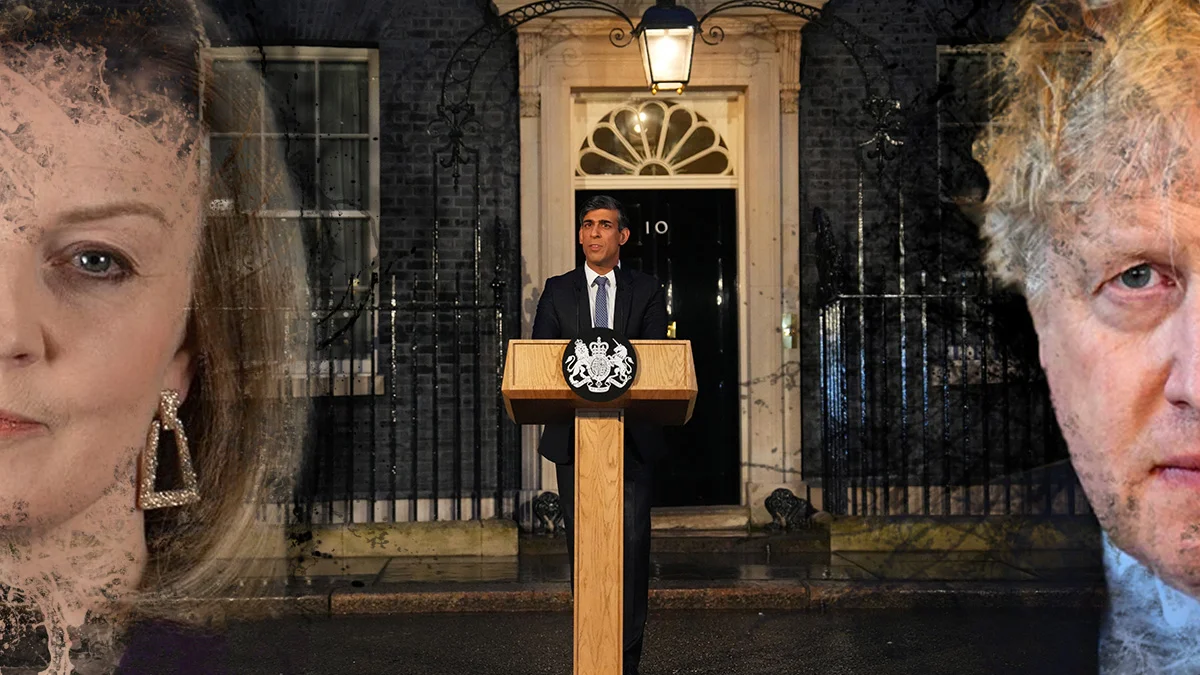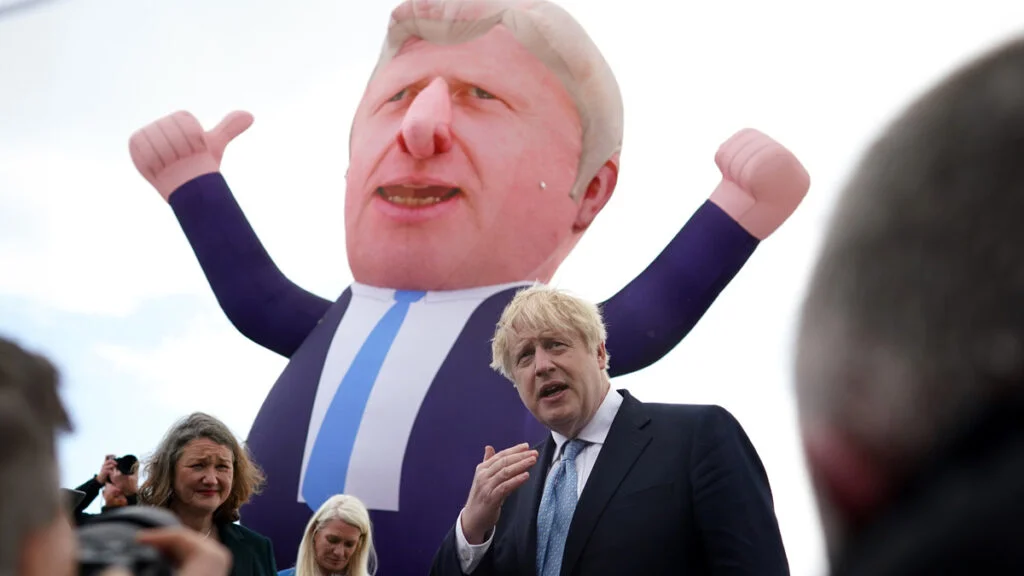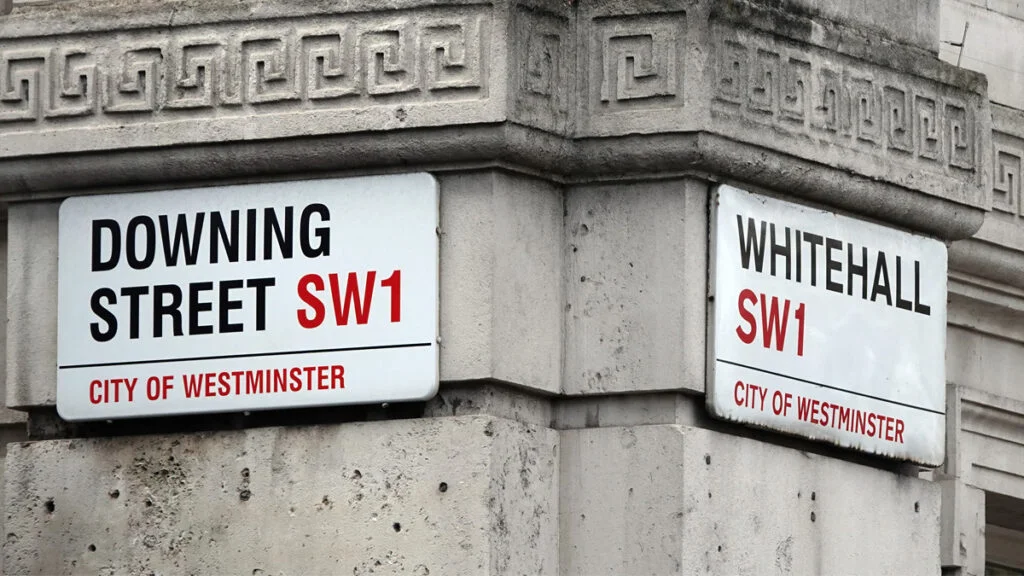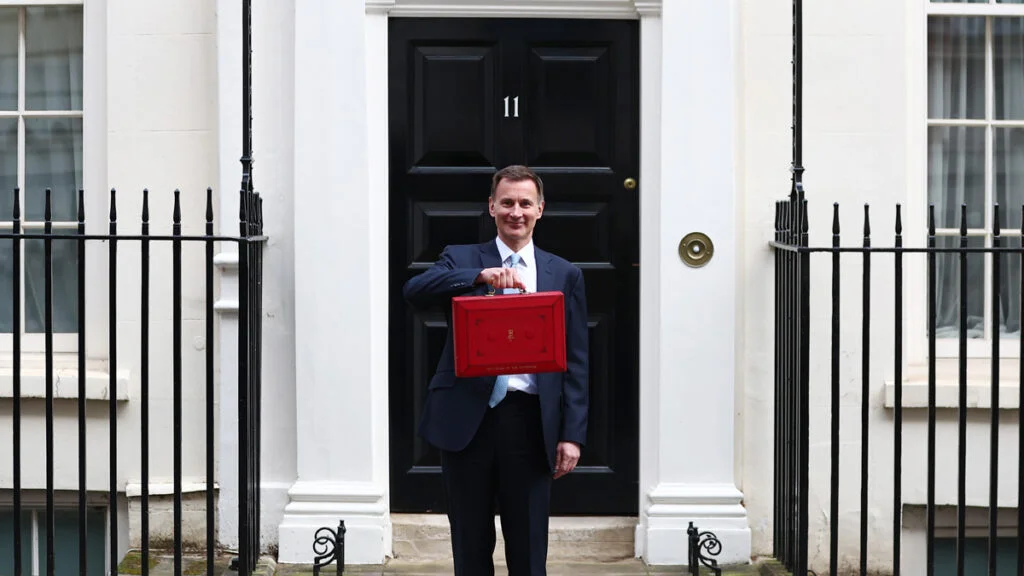
Politics comes at you fast. Three years ago, Boris Johnson was riding high in the polls thanks to a "vaccine bounce" as Britain emerged from the pandemic with a renewed sense of optimism.
The Tories were triumphant in the May local elections, taking control of councils across Red Wall areas in the North East and the Midlands.
Several days later came the zenith of Johnson's premiership as the Tories won the Hartlepool by-election with a majority of nearly 7,000 – the biggest by-election success for a sitting government in decades.
The then-prime minister arrived in Hartlepool and gave a victory address on the seafront in front of a 30-foot inflatable blimp of himself. He promised to level up the country as he and his aides talked excitedly about the possibility of a decade in power and his giant effigy bobbed up and down in the background.

Sir Keir Starmer was so damaged by the result that he seriously considered quitting as Labour leader, his strategy in tatters. As one commentator put it at the time, Johnson appeared to "squat like a giant toad across British politics."
Except, in the end, he didn't. The dramatic unravelling of Johnson's premiership, followed by Liz Truss's brief but disastrous tenure in Number 10, has left Rishi Sunak – the fourth Tory prime minister in five years – with little room for manoeuvre and Starmer very much on course for Number 10.
Sunak is about to enter the most dangerous phase of an already testing premiership. On May 2 voters go to the polls in the local elections once again, and this time the results are likely to spell carnage for the Conservatives.
Sunak will find himself judged against the high watermark of Johnson’s premiership, and the comparison is unlikely to be flattering. The Tories are on course to lose as many as half of the councillors who are up for re-election, including many in the Red Wall seats that are so critical to the party's future.
Swathes of the North East and Midlands is likely to return to Labour on a night that is likely to send shockwaves through Westminster. Some experts believe that the results could be as damaging as the local elections in the run-up to 1997, which signalled the death knell for John Major's flagging government.

While expectations are low, Sunak's critics believe that the psychological impact of the results is still under-priced. "The polls should have started to narrow by now but that just isn't happening," one Tory MP said. "MPs have gone into a bit of a stupor, they don't understand what's happening – and what's about to happen."
While Number 10 remains confident that MPs will not force a vote of confidence – attempting to remove Sunak from office so close to an election would be "insane" – opposition is growing. Lee Anderson, the former deputy chairman of the conservative party, defected to join Reform UK and other colleagues are considering joining him.
Right-wing Tory MPs have put Sunak on notice, warning that his plan is failing and that he must change course. A revolt that has so far been limited to a handful of MPs could easily grow, especially given the Conservative Party’s appetite for regicide.
Sunak's approach and message to his colleagues is simple – ignore the polls. The prime minister believes that they will change as the general election comes into view and people begin to feel better off. That the combination of tax cuts, falling inflation and falling interest rates will ultimately play in the Conservative Party's favour.
Sunak is attempting to pull off something completely unprecedented – never before has a party been so far behind the polls at this stage in the electoral cycle and gone on to win. The atmosphere in Number 10 is said to veer between a siege-like mentality and the edge of despair, but Sunak’s message – publicly and privately – is for Tory MPs and voters alike to stick with the plan.

That plan became a little clearer after the Spring budget. The prime minister and Jeremy Hunt, his chancellor, cut national insurance by another 2p while extending child benefit for nearly half a million families.
The combined effect of the Spring Budget and the Autumn Statement is a 4p cut in national insurance, worth £900 to the average worker.
Sunak is planning to frame his election campaign around national insurance, specifically a pledge to abolish the tax outright, although he has not put a date on the commitment. It is unfair, he argues, that people are being taxed twice on their income – once through national insurance, and again through income tax.
Labour views the pledge as a gift. The Tories, Starmer argues, are proposing another huge unfunded tax cut in the same way that Liz Truss's disastrous mini-budget triggered turmoil in the markets.
It has already gone on the offensive, launching a social media blitz which included images of Sunak morphing into Truss under the tagline: "Rishi Sunak is planning unfunded tax cuts bigger than Liz Truss's."
The Tories in turn believe that they have secured a significant win. Sunak will campaign on the basis that Starmer is opposed to abolishing tax cuts for workers.
The arguments on both sides are arguably spurious, especially given that the Tory pledge to abolish national insurance is hypothetical at best – some Tory ministers have admitted it would be the work of “several parliaments”, equivalent to 15 years – but there is otherwise little to choose between the two parties.
On tax and spend, the Tories and Labour are almost entirely aligned, even if that means that whoever wins the general election will have to oversee significant cuts in public spending. The next election is ultimately likely to come down to competing visions - the Tories asking voters not to risk the fragile economic recovery, Labour arguing that it is time for change after 14 years of Tory misrule and incompetence.
As the election approaches, Starmer is taking a leaf directly out of Johnson’s playbook. Labour, he will argue, needs at least a decade in power to repair the damage wrought by the Tories. If the febrile state of British politics in recent years is anything to go by, that is far from guaranteed.
Steven Swinford is the political editor of The Times.
Related and recommended
Richard Harpin, the founder of HomeServe and Growth Partner and owner of Business Leader, answers your burning business questions
Contestants from The Apprentice reveal the fundamental business lessons they learned from taking part in the TV show
From global talent pools to AI-powered documentation, a work-from-anywhere model is a new way of thinking about productivity, innovation and teamwork
The story of how cycling brought Business Leader member John Readman together with his co-founder and investors




